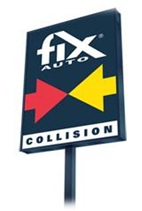In a world where consumers sprinkle their opinions like confetti, leaving car dealer reviews and comments on multiple sites, it is practically impossible to keep track of comments manually.
The only effective way to track a business’s online reputation is using software, including free tools such as Google Analytics. However, dealers should also recognise that communication, feedback and responses are continual and do not take place solely on websites and social media platforms.
Research from review site TrustPilot and the Centre for Economics and Business (Cebr) has predicted that about a fifth of all car sales will be online by 2027. This will make online reviews and comments even more important to buyers – keeping track of them and responding to them will be fundamental for sales and profits.
However, dealers cannot simply focus on review sites. In the same way Amazon invites customers to comment on the product and service they received, motor retail suppliers, aggregators and classified websites are incorporating reviews, creating a more complex commentary landscape.
Langley Steinert was one of the founders of TripAdvisor and has applied much of the same philosophy to his car sales website, CarGurus. Customer searches are not based on price alone – each is rated a ‘great’, ‘good’ or ‘fair’ deal and overpriced vehicles are flagged – but dealer reviews also affect the car’s rating.
Steinert said: “We’ve found most consumers just want to know they are getting a fair deal from a dealer they can trust. It’s why we factor dealer reputation scores in addition to price analytics in our deal ratings algorithm – to provide a level of unbiased transparency on both price and reputation. Our data shows that when a consumer has this transparency, it’s a win-win for shoppers and dealers. Consumers are more informed and ready to buy, and dealers sell more cars.”
Good customer reviews boost dealer ratings
At Carwow, good customer reviews boost a dealer’s ratings, said Karen Hilton, head of sales operations.
“The big challenge facing dealers is the myriad sources from which they can receive feedback. Where it’s slightly different for those in the Carwow network is the fact that customer reviews directly affect a dealer’s visibility on the platform,” she said.
“This isn’t a vanity metric. The more positive customers are about their experience of buying from you, the more offers Carwow sends out for you – therefore the more cars you’re likely to sell.”
At Marketing Delivery, managing director Jeremy Evans said dealers need to capture and assess customer feedback throughout the buying lifecycle, not just from buyers: “If you’re only listening to the minority who have actually purchased a car, you are inevitably not learning the lessons about why people might choose to go elsewhere.
“It’s increasingly challenging for dealers to keep track of every online channel that a customer or prospect might express an opinion on, but it’s eminently possible to improve service levels via the feedback given in real time from a well managed CRM process.”
Video communications company CitNOW enables customers to rate and comment on the video messages they receive. Managers can gauge where the technology is being used most effectively and where additional training is needed.
Founder Andrew Howells said: “It’s important that the feedback process isn’t onerous for the consumer, and doesn’t produce too much data for the time-strapped manager to sift through.”
For Simon Wadsworth, founder and managing partner of online reputation management firm Igniyte, using a sophisticated tracking system to monitor responses is key. However, he said the traditional dealer and manufacturer survey still have their place. He highlighted three areas of focus:
1: Use an online monitoring service so all mentions of your dealerships can be tracked and responded to. Potential customers discovering negative comments are likely to be put off.
2: Social media accounts need dedicated time and resources, to update pages and to respond to customer queries. Don’t take on more than you can handle and ensure you join only those channels that are used by your customers.
3: There is often more data, charts and information than the average person knows what to do with. Tracking/ monitoring systems, whether rudimentary systems, such as Google Alerts, or something more complicated, work by looking for a keyword. These tools will then alert you to when and where your keyword has been mentioned so you can evaluate each mention in real time on a case-by-case basis.



















Login to comment
Comments
No comments have been made yet.